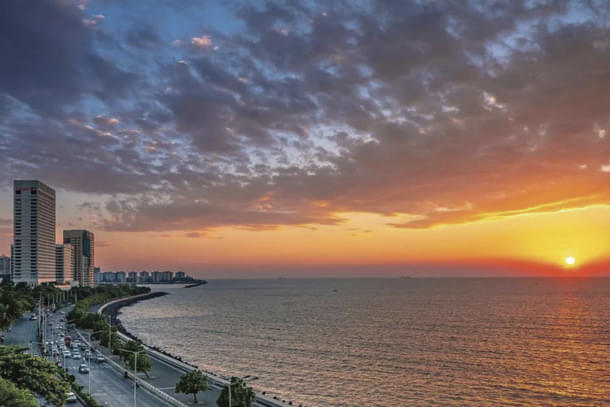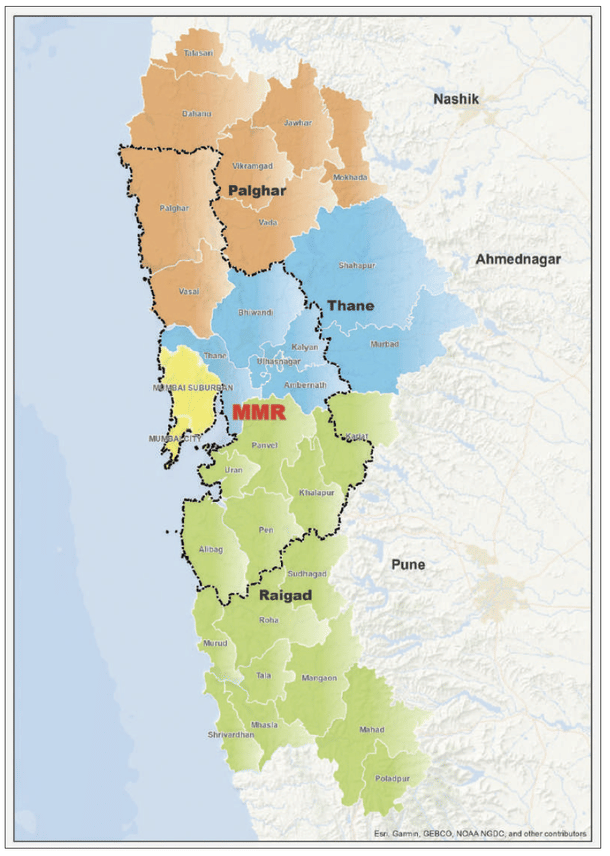News Brief
Economic Master Plan For MMR: Maharashtra Govt Establishes State-Level Unit To Oversee Implementation
Swarajya Staff
Feb 06, 2025, 02:10 PM | Updated 02:10 PM IST
Save & read from anywhere!
Bookmark stories for easy access on any device or the Swarajya app.


The Maharashtra government has established a state-level Project Implementation Unit to oversee the execution of the Mumbai Metropolitan Region (MMR) Economic Master Plan under NITI Aayog’s Growth Hub initiative.
This newly formed unit, led by the Additional Chief Secretary of the Housing Department, will comprise representatives from various state agencies and boards.
Its primary function is to supervise the multiple committees responsible for implementing the MMR Economic Master Plan at the state level. The formation of this unit was formally announced through a Government Resolution issued on Wednesday.
Launched in 2023, NITI Aayog’s Growth Hub (G-Hub) programme is a strategic initiative aimed at fostering structured development in key city-regions to meet economic targets by 2047. The programme seeks to establish a framework for crafting economic growth strategies by identifying key drivers, enablers, and necessary interventions
The City-regions have been defined as a group of districts which are economically & socially adjacent, related, or co-dependent.
In the initial stage, 4 city-regions have been taken up on a pilot basis to develop a template for devising an economic strategy. Later, it would be scaled up to 16 more cities.
The four city-regions selected on a pilot basis are Mumbai Metropolitan Region (Maharashtra), Surat (Gujarat), Visakhapatnam (Andhra Pradesh), and Varanasi (Uttar Pradesh), with Mumbai leading as the flagship city-region.
To facilitate the execution of the MMR Economic Master Plan, multiple administrative bodies have been formed. These include the Growth Hub Regulatory Board, chaired by Chief Minister Devendra Fadnavis, and the Growth Hub Coordination Committee, led by the chief secretary. Additionally, a Project Implementation Authority and a Project Implementation Unit have been established to carry out the plan’s directives.
However, due to challenges in monitoring and managing the Project Implementation Unit, which falls under the jurisdiction of the Mumbai Metropolitan Region Development Authority (MMRDA), the state government has introduced a higher-level unit for better oversight, according to reports from The Indian Express.
As outlined in the Government Resolution, this newly formed state-level unit will play a key role in supporting both the Growth Hub Governing Board and the Growth Hub Coordination Committee. It will address obstacles hindering implementation, present critical issues for discussion, and seek necessary guidance from NITI Aayog.
The Mumbai Metropolitan Region (MMR) currently boasts an economy valued at $140 billion (Rs 12 lakh crore). Spread across five districts, it is home to an estimated 25.8 million people and provides employment to 10 million workers.

With a per capita income of $5,248 (Rs 4,36,000)—higher than the national average—the region has immense economic potential. However, between FY12 and FY20, its real economic growth remained sluggish at a 6.1 per cent compound annual growth rate (CAGR), lagging behind the national average.
By 2047, MMR is projected to emerge as one of the world’s leading economic powerhouses, with a GDP of nearly $1.5 trillion, approaching the 2023 GDP of Tokyo’s metropolitan region ($2 trillion). Its per capita GDP is expected to rise to $38,000, comparable to present-day Italy.
The Economic Master Plan has identified seven core economic growth drivers that could generate an additional $130–150 billion (Rs 11–12.5 lakh crore) in GDP by FY30, while creating approximately 2.8–3 million non-farm jobs.





